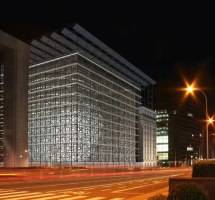January 16, 2015
‘Squeezed generation’ of middle-aged workers take most sick days
Employers’ concerns regarding the ageing workforce are usually based on the belief older workers will tend to struggle more with health problems. However, new data from AXA PPP healthcare reveals it’s the middle band of workers (30-49) that take more sick days than any other age group; averaging 2.3 sick days in the past six months; with a quarter of these workers taking three or four days off sick. Twelve per cent of this middle age group have taken the equivalent of a working week off sick (5 or 6 days) in the past six months, double the number of 18-29 year olds (6%) and just 5 per cent of those 50-69. This ‘squeezed generation,’ faced with the pressures of balancing work and home, takes least positive steps to help ensure good health; has a fairly negative outlook regarding their jobs and is more stressed than other age group.























December 9, 2014
Government must beef up the way it manages outsourced contracts
by Gary Watkins • Briefing, Comment, Facilities management, Public Sector
(more…)